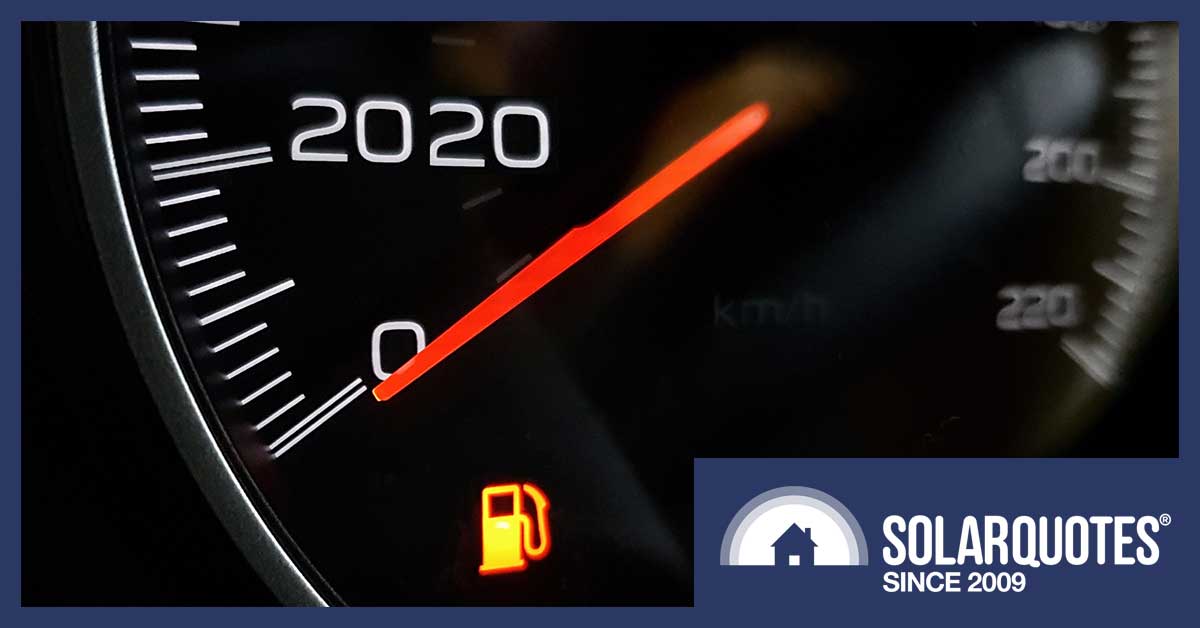
The year 2020 was wonderful except for one little thing, and it’s hard to get littler than a virus. Thank god Australia got off lightly compared to most.
If you’d like to give credit to those who saved our bacon rather than upper management, you can thank the medical professionals. They refused to let the Government make a dog’s breakfast of our pandemic response.
I know it has become almost mandatory to deride 2020 as an annus horribilis, but if you join me in looking on the bright side of things, I’ll show you how to find joy in this horrible annus. So please don your gay apparel — which in this case should be a festively themed facemask — and join me in clearing coronavirus contaminated corrosion from what I know appears to be the most lacklustre year since disco died.
Under The Dross, 2020 Contained Brilliance That’s Ready To Shine Through.
The baddest of bad news for this year has taken many good people from us. The goodest of good news is there’s an excellent chance we won’t die in the future. And by we, I mean humanity. No – immortality is not yet available. Things are looking up, but not that far up.
Renewables are undeniably cheaper.
The good news is renewable energy — especially solar power — is now cheaper than fossil fuels. And when I say it’s cheaper, I don’t just mean:
- When including the health and environmental costs of fossil fuels.
- When the sun shines, or the wind blows.
- When deciding between building new fossil fuel capacity or new renewable capacity.
I’m saying that a combination of solar and wind generation and energy storage is now cheap enough to drive existing, paid off, fossil fuel power stations out of business. It’s not just cheaper, it’s so much cheaper there is no escape from the revelation, and soon only fools and the mad will deny it.
I’m talking about large-scale renewables and energy storage here. Rooftop solar in Australia started paying for itself years ago, although home batteries still don’t pay for themselves under normal circumstances.
Strangely, the rest of the world has mostly ignored Australia’s success with rooftop solar just as they ignored our handling of the Global Financial Crisis, our raising of worker incomes in an English speaking country, and Aussies mostly not dying from a plague.
But giant wind farms, big solar and big batteries are big business and can no longer be ignored.
Much to my chagrin1, this doesn’t mean we can run up to our remaining coal power stations, give them a stiff kick and watch as they crumble into dust. It won’t be quite that easy. But a relatively rapid demise of coal power followed by gas is certain.
But the impending demise of fossil fuel generation isn’t the only good news of the year.
One Year From New Virus To New Vaccine
On December 8th 2019 a resident of Wuhan rocked up to hospital with a disease resembling pneumonia. Just 33 days later, Chinese researchers had determined the genetic sequence of a previously unknown coronavirus and published it on the internet to benefit medical experts worldwide. On the 8th of December 2020, one year after the first known hospitalization for COVID-19, the UK began to vaccinate the most vulnerable. Multiple effective vaccines will soon be available2. While supplies are limited now, billions of doses will be produced before the end of 2021.
While I wasn’t surprised by the vaccine development speed, this was only because I knew how far humanity had progressed with this sort of thing. If COVID-19 had cropped up 10 years ago, everything would be more difficult, and millions would have been cooped up in Melbourne with crap internet. If the virus showed up 50 years ago then… well, it probably would have burned out before spreading far. The roads around Wuhan were absolute rubbish back then, and the virus may never have infected enough humans to mutate into its now highly transmissible form.
When around two-thirds of Australians are immunized, the country may become pandemic proof. But we will likely need to immunize more than that to be on the safe side3 and because “pandemic proof” is not the same as “nobody gets sick”.4

This XKCD comic can be found here. There are other pandemic related ones here and here and here and here and here…
CO2 Emissions Have Passed Their Peak
Global greenhouse gas emissions peaked last year and fell 6.5% in 2020 year thanks to the pandemic:
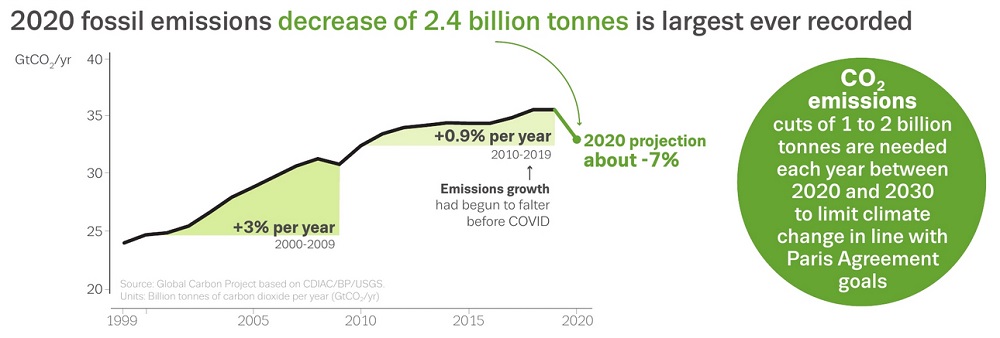
This says about a 7% drop in CO2 emissions, but they are rounding up. Source: Global Carbon Project
Most of this decline is temporary and will disappear once the world economy picks up – but not all of it. I am confident — as in I’m willing to bet money — that world CO2 emissions have passed their peak and will never again reach the level they were in 2019. Renewable energy is stomping the fossil fuel competition and the only car manufacturer to turn a profit this year has been Tesla. I’ve tried a few electric vehicles, and I promise you, they are poised to take the world by storm.

By electrical storm.
A Long Way To Go On Emissions
While passing peak emissions is necessary to keep even one icecap intact, it does mean we’ve only stopped increasing the rate we’re making things worse. We still have to get our emissions down to a safe level, which at the moment looks like it would be a negative amount5.
As you can see from the readings below taken at the Mauna Loa Observatory in Hawaii6 atmospheric CO2 levels rose this year much the same as they did in the previous five:
We need to cut civilization’s emissions by at least 80% to stabilize the amount of CO2 in the atmosphere and melt the icecaps more slowly. If we cut emissions by a net 100%, it will allow the oceans and other carbon sinks to draw down a modest portion of the CO2 in the air and keep us from cooking our gooses — as well as all other non-mutant waterfowl.
So while we still have a long way to go, without the recent emissions downturn this November’s figure for atmospheric CO2 parts per million would be even worse:
Renewable Price Plunge
The cost of solar has fallen through the floor, and if it keeps going, it may need to be reclassified as geothermal energy as it burrows through the earth’s crust. This graph from Our World in Data shows the cost of solar energy dropping 89% over 10 years and onshore wind energy by 70%:
But I’m afraid this graph is misleading because the figures don’t represent real-world prices. In reality, the cost of wind and solar energy is considerably less. The information’s off because it uses Lazard’s estimates for the levelized cost of energy that assume an interest rate of 8%7. While this made sense decades ago, these days a 0% interest rate would be more accurate. The current rock bottom cost of capital makes wind and solar energy generation cheaper as their cost is mostly capital.8 While interest rates may rise after the pandemic, they’re not likely to rise by much. The general trend has been downwards for over 30 years now, and I don’t expect any major change in a hurry.
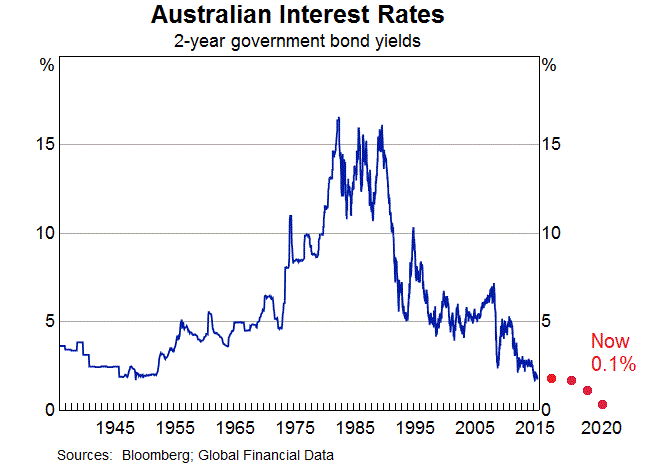
I added the bit in red to make the graph more up to date.
Interest rates ranging from low to nearly non-existent have caused solar to be bid in at impressively low prices worldwide. Here’s what some solar projects are being paid to go ahead in Australian cents per kilowatt-hour at today’s exchange rate9:
- Portugal: 1.8 cents per kilowatt-hour
- United Arab Emirates (UAE): 1.8 cents per kilowatt-hour
- New Mexico, USA: 2 cents per kilowatt-hour
- Saudi Arabia 2.1 cents per kilowatt-hour
- Brazil: 2.3 cents per kilowatt-hour
- Mexico: 2.6 cents per kilowatt-hour
- Los Angeles, USA: 2.6 cents per kilowatt-hour
- India: 3.6 cents per kilowatt-hour
Because even the lowest cost, fully paid off, coal power stations generally need to receive an average at least 3 cents per kilowatt-hour to stay in business, the falling cost of solar hardware combined with low-interest rates10 means the world’s remaining coal power stations will soon go under. While gas power stations are likely to stick around a while longer, they’re threatened by the falling cost of energy storage.
Batteries Became Cheaper
One and a half years ago Elon Musk said Tesla would produce battery cells under $132 Australian per kilowatt-hour11 by the end of 2018.
He also promised the cost of cells combined into battery packs would be under $132 per kilowatt-hour before June 2020. But, strangely enough, when these dates rolled around Elon totally failed to point out how he’d been right. This uncharacteristic restraint, combined with the fact Tesla increased Powerwall home battery prices, makes me think he either exaggerated or failed.
Fortunately, Tesla is not the only battery maker in town. We have evidence from China that battery packs used in some electric buses are now under $132 per kilowatt-hour, while the market average for electric vehicle battery packs worldwide is around $180 per kilowatt-hour. By 2023 battery packs are expected to average around $133 per kilowatt-hour.
The low cost of battery storage means renewable energy isn’t just cheaper than fossil fuels when the sun shines, or the wind blows. It’s now cheaper to instead use a combination of solar, wind, and energy storage to meet electricity demand. As one example, if the proposed Goyder South Hybrid Renewable Energy Facility in South Australia goes ahead, it may consist of:
- 600 megawatts of solar panels.
- 173 megawatts of wind turbines, and…
- 1,800 megawatt-hours of battery storage that can supply 900 megawatts of power.
The battery alone could meet over one-quarter of the state’s peak grid electricity demand during a heatwave for two hours.
EVs Ready To Roll
Around 2.3% of vehicles manufactured in 2019 were electric. In 2020 the estimate is 2.5%. While this makes it appear that EVs’ total production increased, they actually fell due to the global pandemic. The percentage figure only increased because other vehicle production fell further. But when it comes to beating the competition, a percentage increase is still a win.
Over half of new cars sold in Norway this year were electric, and among the accursed Dutch, it was 15%. When it comes to EV adoption, Australia is a little behind Norway, but only because we’re so far behind, we lapped the planet.12 But EVs will take off here. Almost everyone with money will soon want one simply because their performance is so much better than comparatively priced internal combustion engine cars. Over time, they’ll become affordable for people who would normally only buy lower cost new cars. While some think current electric cars are too expensive for Australians, the median price of a new passenger vehicle last year was around $60,000, so it’s not as if no one can afford to buy them.
More EVs is useful because they’re energy storage on wheels. While they can supply power to the grid when needed, simply charging them when solar and/or wind output is high helps integrate more renewables into the grid.
Coalition Coal Cock-up
The Federal Coalition has been in power for over seven years. In that time, they have:
- Reduced the Renewable Energy Target
- Axed the carbon price
- Promoted coal mining
- Promoted new coal power stations
- Tried to prevent coal power stations closing
- Worked to ensure the failure of international agreements on emissions.
Back when he was the Treasurer, our current Prime Minister even took a lump of coal to Parliament and waved it around so the other Coalition members would be jealous of what Santa had stuffed in his stocking. The Coalition lives for coal. It’s just the rest of the world that dies for it.
While it is bad for Australia’s economy in the short term, I have to say the Coalition’s long term love-on for coal makes it kind of hilarious they have screwed up so badly that China no longer wants to buy it from us.
Due to current Sino-Australian trade bitchiness, Australian coal exports to the Middle Kingdom are a fraction of what they were.13 While China is suffering from high coal prices and rolling blackouts,14 they prefer to put up with the pain in a pandemic damaged world economy rather than back down. If you’d told me just one year ago the Coalition would make such a colossal coal cock up they’d lose our second largest customer, I would never have believed it.
The coal shortage in China is hastening their transition to renewables while here it’s resulted in the delay and potential cancellation of coal mine expansions. So the government that loves coal has managed to harm Australian coal mining and caused irreparable damage to our largest coal export market.
If we got into this position due to bad luck or because we’d taken some moral stand, that would be one thing, but I’m afraid it was stupidity all the way. Scott Morrison decided to poke a bear when it was in a particularly grumpy mood. Poking a bear when you’re an extra-large curry-flavoured snack in a suit is never a good idea.
Worst of all, Morrison’s motive in making China mad appears solely to have been to get in the good graces of Donald Trump:
- A man who drops allies faster that you drop a Tinder date who turns up with your name carved into their face.
- A politician who caves so easily he can be used to rescue Thai schoolboys.
- A man as effective as Boris Johnson’s hairbrush
- A man more self-serving than a waiter practising in a mirror.
- A man so callous the United States hasn’t had a President whose actions have resulted in more needless deaths since two Presidents ago.
Maybe Morrison thought other countries would have his back, but they are pissed off with Australia’s inaction on climate change and have zero desire to intervene on behalf of coal exports. The Chinese Government clearly did not target coal at random. They are turning the screws to isolate Australia and maximize pain to our economy and embarrassment to the Coalition.
In return for pushing for an inquiry into the origins of the coronavirus that probably would have gone ahead anyway, Scott Morrison received a nice medal from Donald Trump:

The US Order of Merit (Source: Medals of America.)
The US Order of Merit is beautiful and sells for anything up to $500 on eBay.
Fossil Fuels Won’t Die Overnight — But It Will Happen
The days of fossil fuel generation are numbered. The bad news is those numbers are still fairly high. While wind and solar energy generation combined with battery storage will drive coal and then natural gas out of the electricity sector, it’s still going to take time. The good news is we can speed things up through our personal actions.
Not only is Australia a representative democracy, but our culture is also materialistic and individualistic. Pretty much like Chinese culture. This means we can pay to put goddamn solar panels on our roofs if we want. The local grids don’t always have the capacity to export as much clean energy as we’d like, but at least it’s possible to complain to our MPs about this without getting screws turned on us.
Fortunately for us, since big business is all about making bank, it now has no interest in new coal power in Australia and very little interest in new gas or diesel generating capacity. They know there is no money in it, and the future is renewables and energy storage, which will be the case around the world.
At the moment, large scale solar and wind farm construction in Australia is constrained by transmission capacity, and it usually takes at least two years for new lines to be planned, approved, and built. But lower interest rates make new transmission cheaper, and it looks certain grids will have their long-distance transmission capacity beefed up considerably over the next few years. By the time that happens the cost of renewables and storage will have fallen even further. After the Liddell Power Station closes in 2023, Australia’s remaining coal capacity will be lining up for permission to shut down permanently.
While 2020 may have been a pretty crappy year, I think 2021 will be the start of a very optimistic decade.
Footnotes
- Chagrin is a French word meaning “grief”. Also, “smiling Japanese tea”. ↩
- Just found out the cheap to produce Oxford/AstraZeneca vaccine is 95% effective at preventing symptoms and 100% effective in preventing severe COVID-19 in trial participants. Also, a Turkish trial of relatively easy to produce Chinese vaccine found it to be 91% effective, which is additional good news for those looking to vaccinate on a budget. ↩
- It would be nuts not to immunize nearly 100% of the elderly, but we will still need high immunization rates among the young to stop them spreading it. ↩
- Alternatively, we could give most of our vaccine doses to countries where the virus is taking a terrible toll. After all, ’tis the season for giving. ↩
- Fortunately, it doesn’t look like it will be too difficult to remove a modest portion of the CO2 from the atmosphere through a variety of fairly low tech methods, such as growing plants and then doing terrible things to them. ↩
- The fact the observatory is on a volcano is not a problem. I can understand someone wondering if volcanic CO2 emissions affect the readings. Still, anyone who jumps from wondering to saying it is a problem is a double idiot: (1) They didn’t bother to actually check, and… (2) They assumed the people taking the measurements are even dumber than they are. ↩
- According to the note near the bottom of page two of this analysis. ↩
- It also makes coal and nuclear cheaper, but their costs are so high they can’t compete. These two energy sources also don’t play well with solar and wind because they save little money by shutting down during periods of high renewable output. ↩
- Currently, 76 US cents to the Australian dollar. ↩
- While interest rates in Mexico and India are still well above 0% at 4.25% and 4% respectively and Mexico was actually at 7% at the time the solar price I gave was bid in, the low cost of solar panels and inverters plus plenty of sunshine in those locations still makes it cheap. ↩
- $100 US per kilowatt-hour. ↩
- Since we lapped the planet it’s kind of fitting we wound up in Lapland. ↩
- In the 12 months up to November they were 54% what they were in the 12 months before that, but they have been heading down and may be next to nothing now. ↩
- The near abolition of Australian coal imports is not the only contributor to the blackouts, but it is a major one — despite what China’s media says. ↩


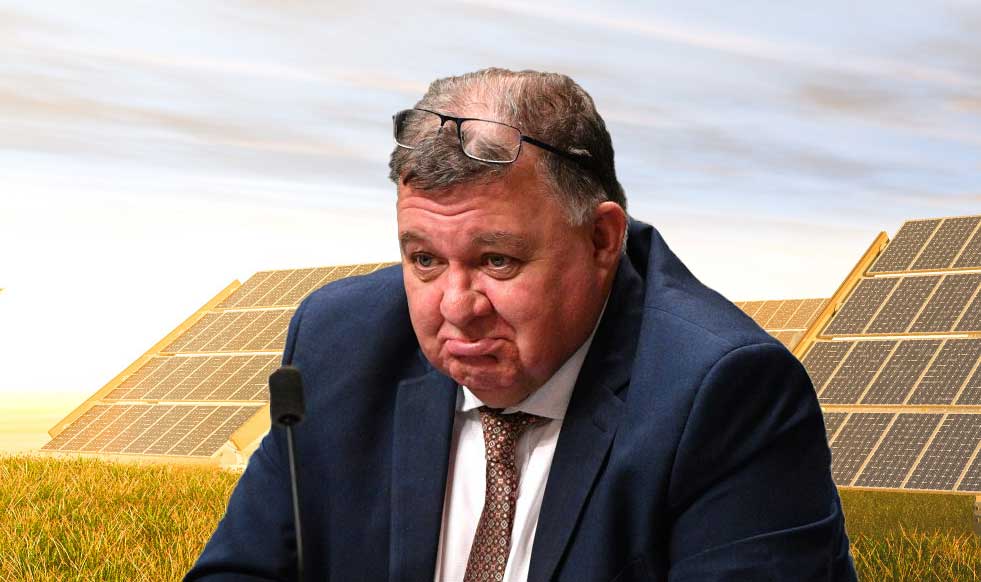
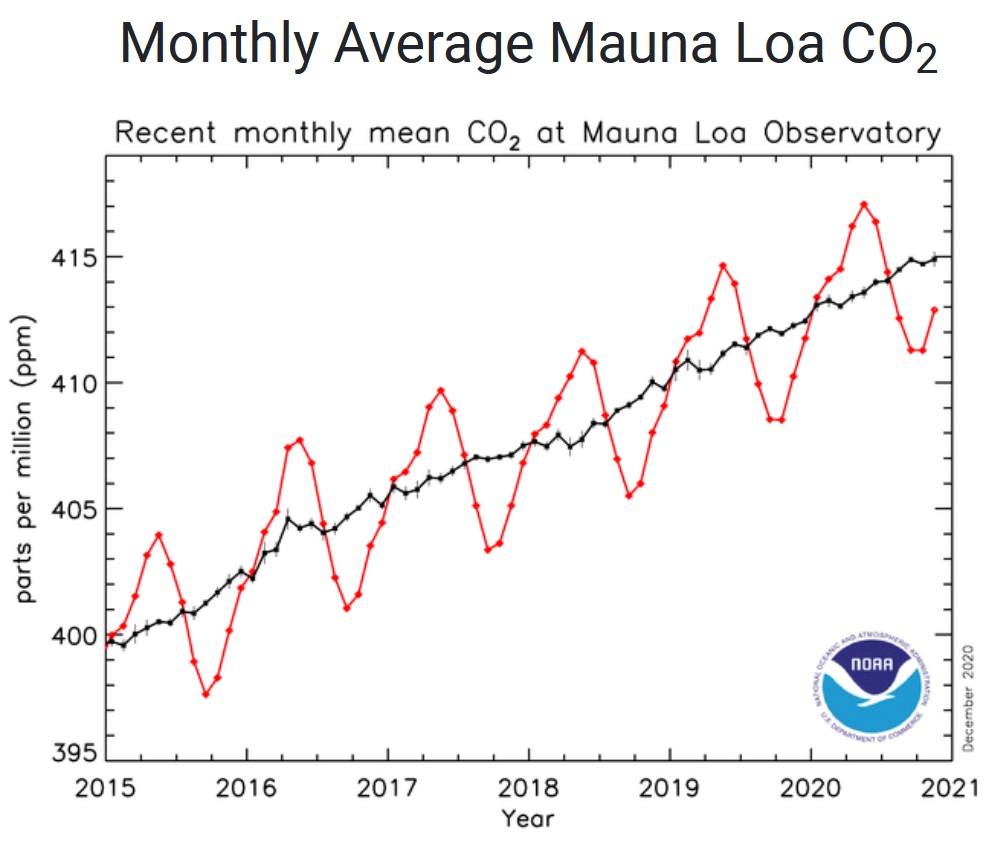
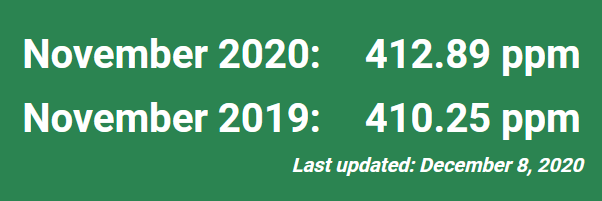
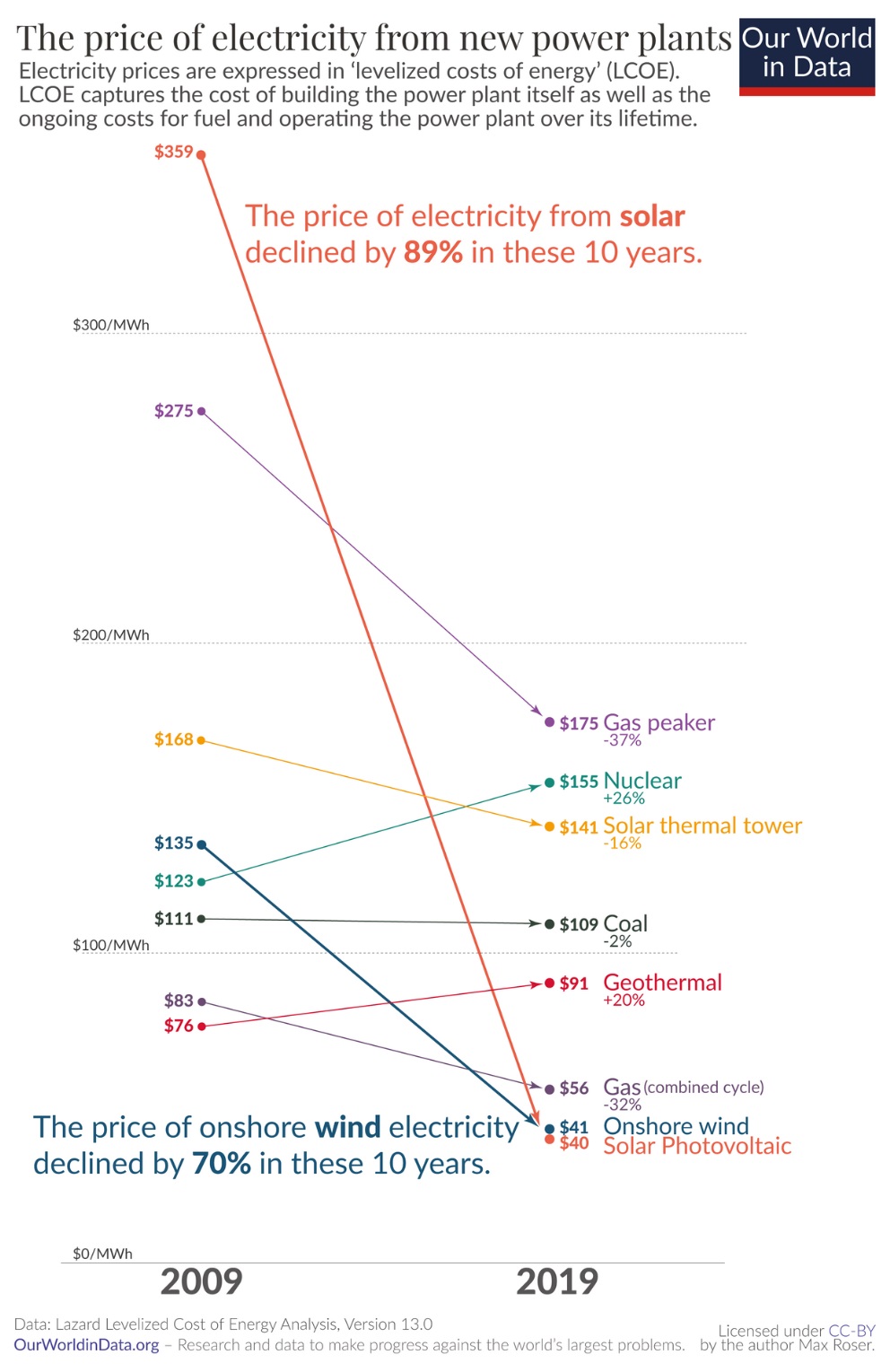
 RSS - Posts
RSS - Posts



I hope your figures for the rooftop solar price decline do not take account of the widely advertised cowboys out there almost giving away 6.5 kw systems consisting of some very dubious equipment and installation quality as witnessed by fellow followers of the crap solar facebook blog.
Don’t worry, it’s for quality solar systems installed by someone who cares about the work they do.
Good to see solar and wind is so much cheaper than fossil fueled electricity. Presumably the subsidies are no longer needed and solar and wind are now producing at least well over 50% of our electricity
For electricity generation all that is required for energy markets to work efficiently is for there to be a carbon price equal to the cost of removing emitted CO2 (and the equivalent of other greenhouse gases) and sequestering it reasonably long term. And to price in the health effects of coal pollution. That will level the playing field and remove any need for renewable subsidies. I’m afraid the subsidies we have through the Renewable Energy Target are a second best solution and are being rapidly phased out. (Very rapidly in the case of LGCs, although they may have extended life in carbon offsets markets.)
Fortunately, even without making fossil fuel generation pay for its health and environmental costs, it will still be phased out. Of course, it will happen more slowly and this will result in more deaths.
Australia supplied (before the bans) just 1.6% of China’s thermal coal demand. I’m not sure it’s really is such a big contributor to their issues.
I’m sure they thought they could do without it — and they are — but they have had other multiple other problems that have caused the coal shortage to bite. Imagine what would happen here if the grid could only meet 99% of demand over summer. Politicians would be acting as though the world was coming to an end.
One chap on Facebook is advertising 9.9kW tier-one panels plus Solis inverter for $4,400 and this is the same price I paid for 6.6kW and a 5kW Fronius three-phase inverter. My comment of “bait advertising” was quickly deleted.
Question: As inverters must be 5kW export limited in WA, why are all inverters sold at only 5kW capacity with panels allegedly producing 6.6kW? Export limiting is surely no problem. Is it not possible to keep the 6.6kW minus 5kW or 1.6kW for internal use?
In WA a solar feed-in tariff is only available to residential properties if the inverter capacity is 5 kilowatts or less, so this is the maximum inverter size that is normally installed. But because the feed-in tariff for new solar in WA is now so low it’s possible some big homes that use a lot of electricity during the day may be better off financially with a larger solar system and no feed-in tariff. Daytime electricity consumption would have to be high, though.
Muzz,
You opine: “Presumably the subsidies are no longer needed…”
Sadly, fossil fuels get much more subsidies than renewables do.
“The growing evidence from groups like the IMF and the IEA shows that fossil fuel subsidies are a major drag on the global economy, with the true costs of their use being a burden on wider society.”
See: https://reneweconomy.com.au/global-fossil-fuel-subsidies-reach-5-2-trillion-and-29-billion-in-australia-91592/
Here’s a radical thought, Muzz: Why not stop ALL the subsidies for fossil fuels?
Time is also fast running out to stabilise planet Earth’s climate that would still be conducive to sustain human civilisation.
“The year 2020 is crucially important for another reason, one that has more to do with physics than politics. When it comes to climate, timing is everything. According to an April report[1] (prepared by Carbon Tracker in London, the Climate Action Tracker consortium, the Potsdam Institute for Climate Impact Research in Germany and Yale University in New Haven, Connecticut), should emissions continue to rise beyond 2020, or even remain level, the temperature goals set in Paris become almost unattainable. The UN Sustainable Development Goals that were agreed in 2015 would also be at grave risk.”
See: https://www.nature.com/news/three-years-to-safeguard-our-climate-1.22201
The consequences of not getting human-induced GHG emissions rapidly down from now on is explored in the YouTube video titled “Will Steffen – Climate Change 2020 – Why we are facing an emergency – April 2020” below, from time interval 0:13:24 through to 0:28:28.
Greetings, I thought fossil fuelled power generation was not being subsidised. Can you please show me those that are being subsidised?
Hi Ken
I’ll just butt in and say what I see as the main problem with fossil fuel generation is that it doesn’t pay for the full cost of its externatities, which are negative effects it has on people. For example, coal generation doesn’t pay for the harm caused by the greenhouse gases it emits or pay to have them removed from the atmosphere. It also doesn’t pay for the health costs from the other forms of pollution it emits. And it doesn’t pay for the agricultural costs of the ground level ozone pollution it causes. Basically, coal power is a whole bag of nasty, and if coal generation had to pay even half the cost of the harm it causes all our remaining coal generation would be shut down in short order.
Greetings, Does that include modern HELE coal plants?
Yes, it does include HELE coal plants. In China they can increase the amount of generation per tonne of coal by one-third over traditional coal power stations, but they come at the cost of more cost. Even with rock bottom interest rates they are still expensive and emissions per kilowatt-hour are still more than 70% those of traditional coal power.
Please read my previous comment carefully, including links.
I’m not quite sure what these fossil fuel subsidies are Geof, but one thing’s for sure Aus govts sure do well out of coal royalties. As for CO2 emissions, another thing’s for sure, CO2 emissions are not going to decrease. In the meantime I continue to enjoy the benefits of my solar panels
Muzz,
There’s an old proverb that I’d suggest is more than ever relevant today: “There are none so blind as those who will not see.”
It’s abundantly clear the fossil fuel industry receives substantial federal Australian government subsidies. Some people refuse to see it.
See: https://theconversation.com/matt-canavan-says-australia-doesnt-subsidise-the-fossil-fuel-industry-an-expert-says-it-does-131200
Global coal demand is in terminal decline. Therefore, coal royalties will decline. IMO, like Kodak, it seems Australian governments are failing to see the threats (and opportunities) of the rapid rise of disruptive technologies.
A SMH article by Peter Hannam & Mike Foley, dated Nov 17, begins with:
“Tumbling coal prices have lopped this year’s expected mining royalties by a quarter and triggered a $1.4 billion downgrade to NSW’s coffers over four years.”
https://www.smh.com.au/environment/climate-change/much-weaker-outlook-for-coal-slashed-expected-nsw-mining-royalties-20201117-p56fdr.html
Queensland’s metallurgical coal outlook looks grim too. Tim Buckley concludes:
“It is time for Australia to start preparing a transition plan for the growing inevitability of a global energy system transition. The momentum is accelerating and the opportunities, and risks, for Australia are enormous.”
https://reneweconomy.com.au/coking-coals-decline-likely-to-follow-path-of-thermal-coals-demise-79747/
If human-induced CO2 emissions don’t begin to decrease rapidly within the next few years, then human civilisation is at high risk of collapse later this century. Whatever anyone believes in, that will be the consequence of the non-negotiable limitations of physics, chemistry and biology.
Muzz, enjoy the benefits of your solar panels while you can.
Geoff,
Two points:
1. The blind thing. As I said, you refuse to see that CO2 emissions are going to continue to rise for the foreseeable future, and
2. I’m sure I’ll enjoy the benefits of my solar panels while the sun shines
I did read the links you provided. Thank you. The Conversation piece, I do not find compelling. The SMH piece. I guess it shows that any assistance provided by govt to fossil fuel extractors is simply to get significant payback in the form of royalties. The renew economy piece I think was about coking coal for steel making being replaced by hydrogen. It was simply suggesting investment was moving away from coking coal to hydrogen. I have no problem with that.
You spoke of Norway’s take up of EVs but failed to mention the subsidies, free charging and parking. This is the moral penalty they have pay for sucking enormous amounts of fossil fuels out of the North Sea.
All that would happen in Australia is wholesale prices would increase and demand adjusted to suit. With enough of a price rise additional capacity would become available.
As to China, >90% of thermal coal supply is from domestic sources. Of the balance, Indonesia provides much more coal to China than does Australia.
China is dealing with electricity supply problems by idling factories, which is one way to cut demand. I don’t have good information on how widespread it is or if it is only happening those without the right connections — and I’m not talking about transmission capacity.
Useful information, and provided in very readable form Ronald. Actually all (or at the very least the vast majority) of what you write in these reports is informed, professional, and not merely dishing up what has been reported before. It is never boring. I admire the work and effort that obviously goes into these reports. And the style, well, it’s engaging for sure, and any irreverence can usually be immediately excused. A pleasure to read. Thanks, and Happy New Year
Thank you. And Happy New Year!
You are spot on.
I am an engineer and my associates across the country are reporting:
– lots of money flowing into renewables,
– lots of money flowing into pumped hydro projects,
– many inquiries into the electrolysation of water to produce hydrogen in commercial scale for export to Asia (the precursor of large projects to follow),
– NO interest in gas investment.
Happy New Year indeed!
My point is suggesting China’s internal electricity supply problems are due to bans on Australian thermal coal imports is too long a bow to draw.
1. China is not reliant nor dependent on Australian thermal coal supply. Coal supplied from here isn’t much more than a rounding error relative to China’s domestic production/supply.
2. Secondly, they do not have a coal supply shortage. Mining Review points out that even if China wanted to restart imports, there’s no where to unload it – coal port coal storage is mostly full and yet to be cleared. Overall China’s coal inventory is higher than last year (2019).
I definitely could be wrong. I’m no expert on coal. I’m just used to small disruptions in supply having major effects on prices when it comes to generation and energy and I’m seeing high Chinese coal prices at a time when Australian exports to China have bottomed out and jumping to the conclusion they are related.
Ronald,
You end your post with: “While 2020 may have been a pretty crappy year, I think 2021 will be the start of a very optimistic decade.”
I guess while there are opportunities for some, there are trials and tribulations for others.
US petroleum geologist Art Berman tweeted early this morning:
“”After U.S. explorers slashed spending almost in half this year, they’re expected to raise outlays by a mere 5% in 2021.”
–Evercore ISI”
The included graph shows US oil field spending:
2019: $105.7 billion
2020: $58.3 billion
2021: $61.4 billion
See: https://twitter.com/aeberman12/status/1344647200761147398
As Art Berman’s tweeted ‘thought experiment’ on Dec 24 (see link below) suggests, less US oil field investment means less active drill rigs, means a likely drastic fall in US shale oil production starting from perhaps about March 2021. We will see in a few months how reality plays out, and what consequences (if any) that has on energy prices, and any knock-on effects on economies later this year.
https://twitter.com/aeberman12/status/1341761860203409408
We live in interesting times. Happy New Year!
Geoff optimism drives innovation:
So yes you are correct about the next decade being an optimistic period for new energy technology innovation coming into focus globally, but you are off track in your analysis of what those dominating global mainstream technologies will be.
I revisited a post from 2016 here: http://www.2greenenergy.com/2016/11/22/climate-leadership/ that pretty much summed up my views of what lay ahead from a global energy imperative perspective, and there is plenty of maturing and well funded research unfolding around the topic since my post in 2GreenEnergy, as evidenced in a recent updated article here supporting some key points of my 2016 commentary: https://www.machinedesign.com/materials/article/21151239/5-new-reactor-designs-earn-doe-funding
You have passion for technology topics Geoff and that is admirable, but I recommend you broaden your horizons [literally] to develop a global focus about energy technologies of the future.
After all we are discussing critical global issues in an energy starved world, and one where disadvantage and dis-enfranchisement of over half of the worlds population from attaining a basic standard of living due to a lack of access to massive industrialisation and infrastructure developing power; cannot be overlooked or tolerated.
Global technological inequality is what is supporting worsening GHG emissions everywhere. Global equalising generation technologies provide the platform for genuine new era reform. And this is predicated on an entirely different technological focus to the one that you promote Geoff.
Lawrence Coomber
Lawrence Coomber,
Realistic optimism drives innovation – wilful ignorance and blind faith in wishful ‘promises’ lead towards blind alleys and retard progress.
The second link you provide to an article dated 29 Dec 2020 includes the sub-heading: “The goal is to develop safe and affordable reactors that can be licensed and deployed over the next 10 to 14 years.”
I’d suggest waiting 10 to 14 years to see POTENTIAL PROTOTYPE technologies that MAY (or more likely not) demonstrate all the performance claims/promises being made is ludicrous, and dangerous, when demonstrably affordable, mature, large-scale deployable solutions are required (and for electricity generation, are available) RIGHT NOW to mitigate the urgent and existential threat of catastrophic climate change.
See the Will Steffen video on the consequences of not getting GHG emissions rapidly reduced in my comment: https://www.solarquotes.com.au/blog/2020-in-review/#comment-914949
Inevitable sea level rise risks coastal nuclear power plant sites.
See my comment at: https://www.solarquotes.com.au/blog/sea-level-rise-solar/#comment-925736
Also: https://climatenewsnetwork.net/speeding-sea-level-rise-threatens-nuclear-plants/
I’d suggest the ‘learning rate’ for nuclear is simply far, far too slow.
Nuclear fission technologies are demonstrably getting more expensive, while renewables are still getting cheaper.
See: https://ourworldindata.org/cheap-renewables-growth
…although the graph titled “The price of electricity from new power plants” references Lazard data that’s more than a year old (Version 13.0).
Lazard’s more recent data (Version 14.0) is available here: https://www.lazard.com/perspective/levelized-cost-of-energy-and-levelized-cost-of-storage-2020/
Lawrence, you’re still dreaming! Wake-up to reality!
Neoen Australia is proposing to develop a large-scale Battery Energy Storage System (BESS) at Wallerawang, NSW with capacity of about 500 MW and up to 1,000 MWh.
The Great Western Battery Scoping Report, dated 15 Dec 2020, has been lodged with the NSW DPIE and can be found at: https://www.planningportal.nsw.gov.au/major-projects/project/40891